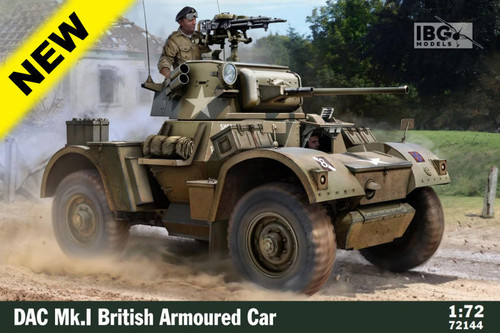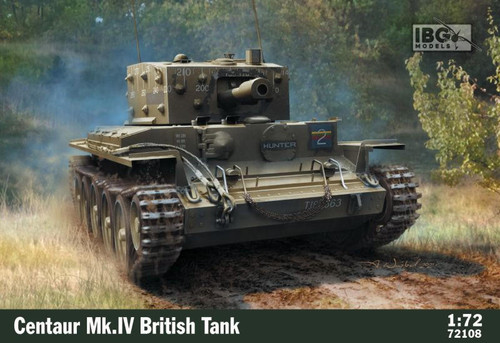Description
The history of the great Daimler armored car begins in 1938 when the British War Office announced a competition for an armored scout car. It was won by the Birmingham Small Arms Ltd. (BSA ) prototype with a 4×4 drive and excellent parameters. In 1939 BSA was incorporated into Daimler Company Ltd. and newly produced vehicle was finally called: Scout Car Daimler Dingo. Scout car success coincided with the demand for an armored car as part of the new concept of the so-called “wheeled tanks” (armored cars with light tank armament), so BSA adapted a successful chassis. The prototype had a more powerful engine (95 HP), a 5-speed preselective Wilson gearbox, 4×4 drive with independent suspension and a double steering system with reversing gear made driving in both directions easy. The BSA concept with a MG turret also gained army interest here (along with the Guy Motors project, which would transform soon into the Humber). The new owner, Daimler, significantly strengthened the tested vehicle’s armament by installing a two-man turret from the A17 “Tetrach” light tank with a 40 mm QF 2-pdr gun. This vehicle captivated the commission and the soldiers in mid-1940 and quickly went into production. 1,000 Daimler Mk. vehicles had been ordered by September but overload with the production of scout cars and the sudden need to strengthen the car’s transmission delayed production. The first units left the factory in July 1941, quickly confirming their advantages. Serial vehicles received few improvements like large hatches in the sides of the hull, smoke grenade launchers and a searchlight on the turret. In March 1942, another contract for 1,400 vehicles began, of which 500 were built as a slightly improved Mk II variant (including new mantlet cover and a hatch above the driver’s head). The vehicle was very successful, appearing in two serial versions with same armament: 2pdr gun and Besa MG with turret-mounted Bren type anti-aircraft machine gun (Vickers K as an option). Till 1945 a total of approximately 2,694 vehicles and chassis of both versions were created. The third planned “High Angle” series version, with an extended gun range did not enter production, just like the “CS” (close support) infantry version armed with a 76 mm howitzer. However, two non-series modifications appeared. The first was the so-called “Littlejohn”, an adapter screwed onto the gun barrel, reducing the diameter of its muzzle to 30 mm, thanks to which tungsten APSV bullets could penetrate 80 mm of armor at 500 meters (against 45 mm of 2pdr). The second (rather local) modification was the removal of the turret from Daimlers in order to lower the silhouette and improve stealth capabilities in the flat terrain of Western Europe, full of hedges and ambushes. Such vehicles, called “sawn off Daimler” or “SOD” were eagerly used by the famous Inns of Court Regiment.

































